Abstract
Aspergillus fumigatus, a medically important fungal opportunist and respiratory allergen, was isolated from woodchips and sewage sludge used in the production of compost at the U.S. Department of Agriculture's composting research facility in Beltsville, Md. It was also regularly isolated as a dominant fungus during forced aeration composting and after 30 days in an unaerated stationary curing pile; in both cases, the fungus was found in pile zones with temperatures less than 60 degrees C. Compost stored outdoors in stationary unaerated piles from 1 to 4 months after screening out of woodchips contained easily detectable amounts of A. fumigatus in the exterior pile zones (0- to 25-cm depths). Semiquantitative studies of the airspora at the composting site revealed that A. fumigatus constituted 75% of the total viable mycoflora captured. At locations 320 m to 8 km from the compost site, the fungus constituted only 2% of the total viable mycoflora in the air. Of 21 samples of commercially available potting soil, one had levels of A. fumigatus nearly equivalent to those of 1-month-old storage compost; 15 others had lower but detectable levels.
Full text
PDF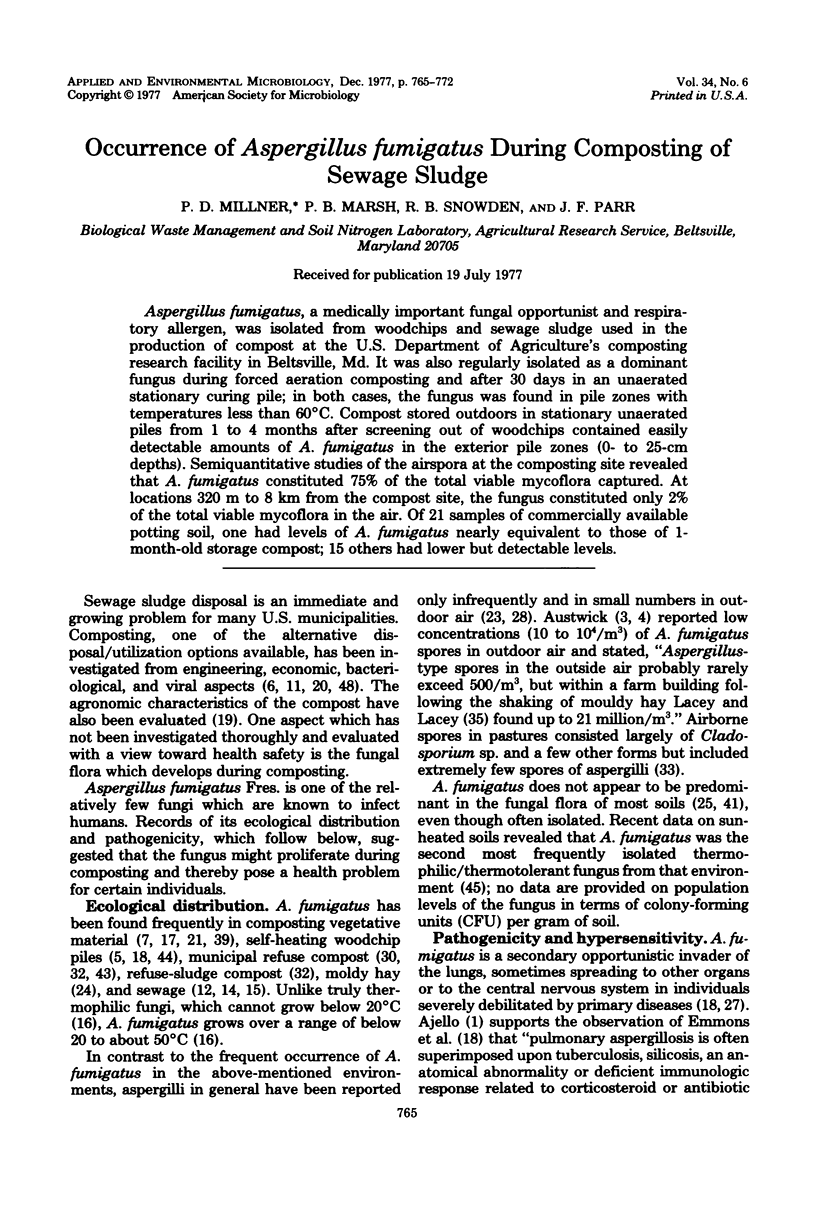
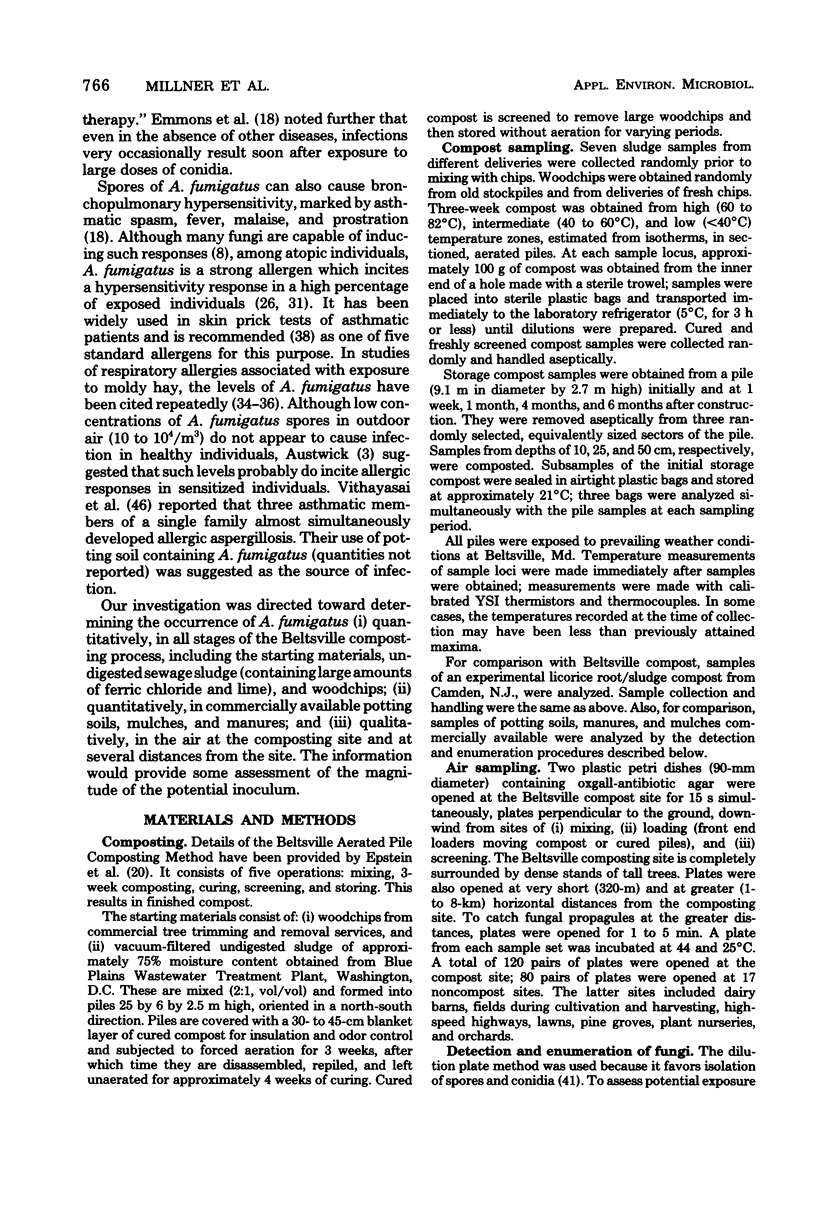
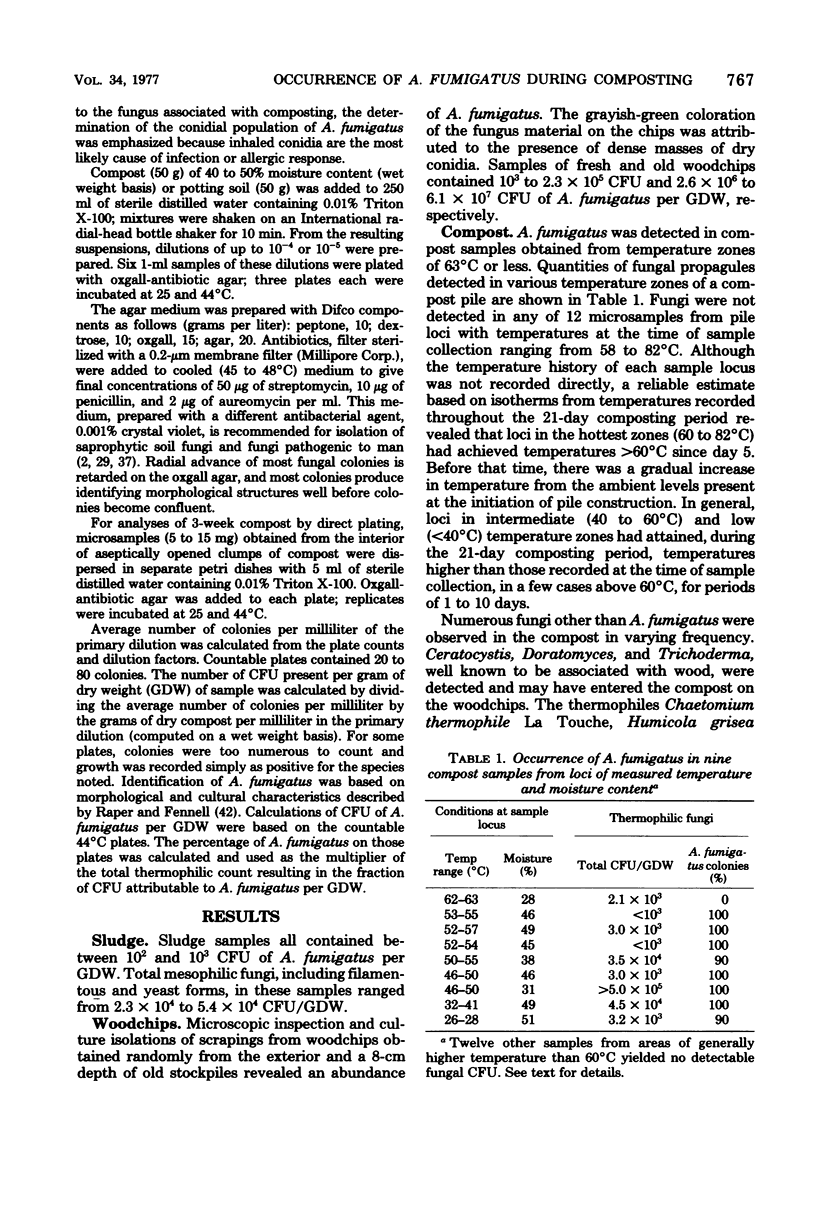
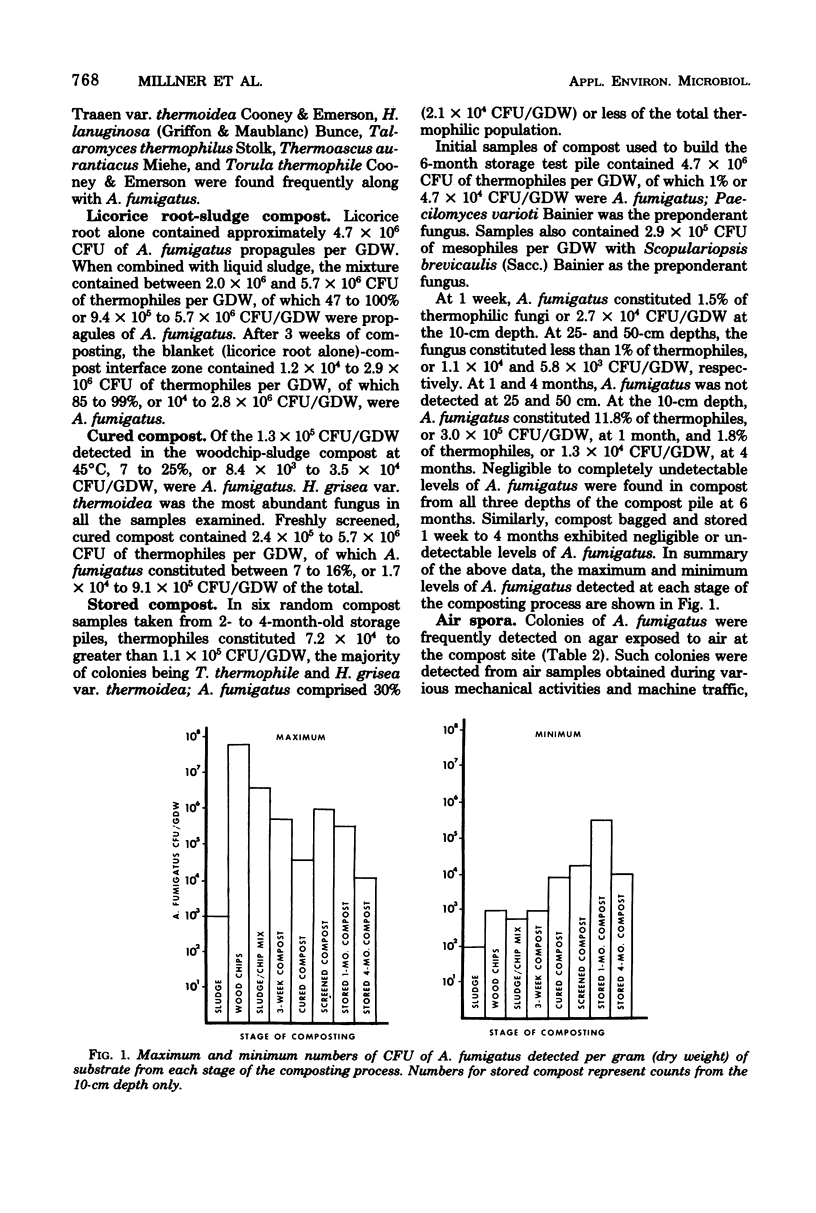
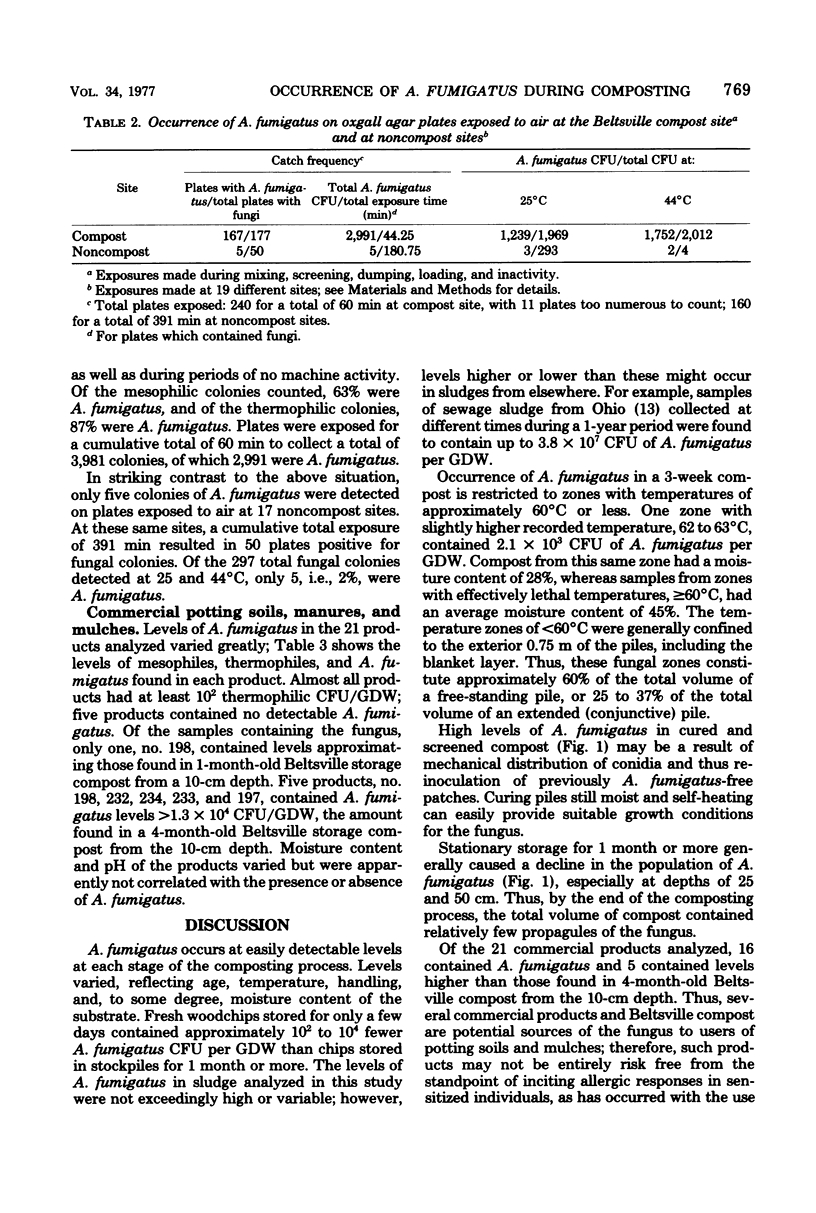
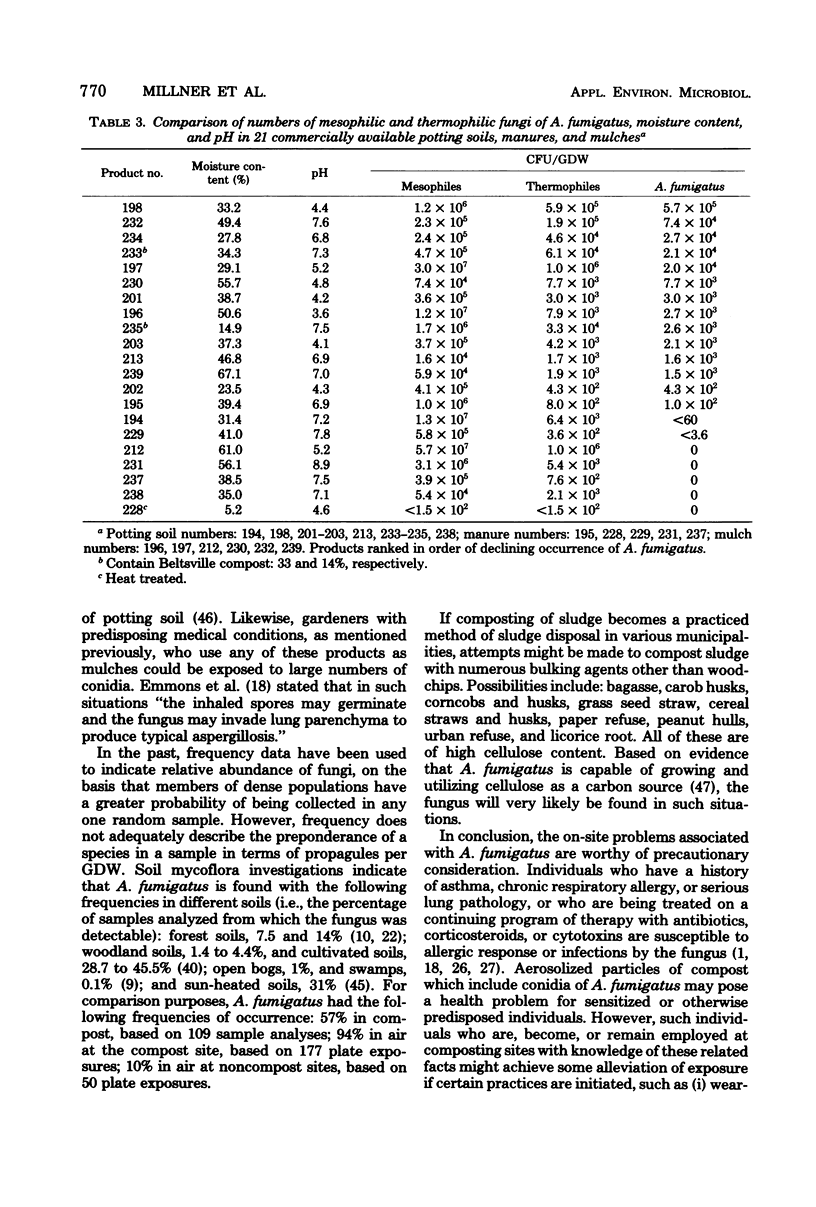
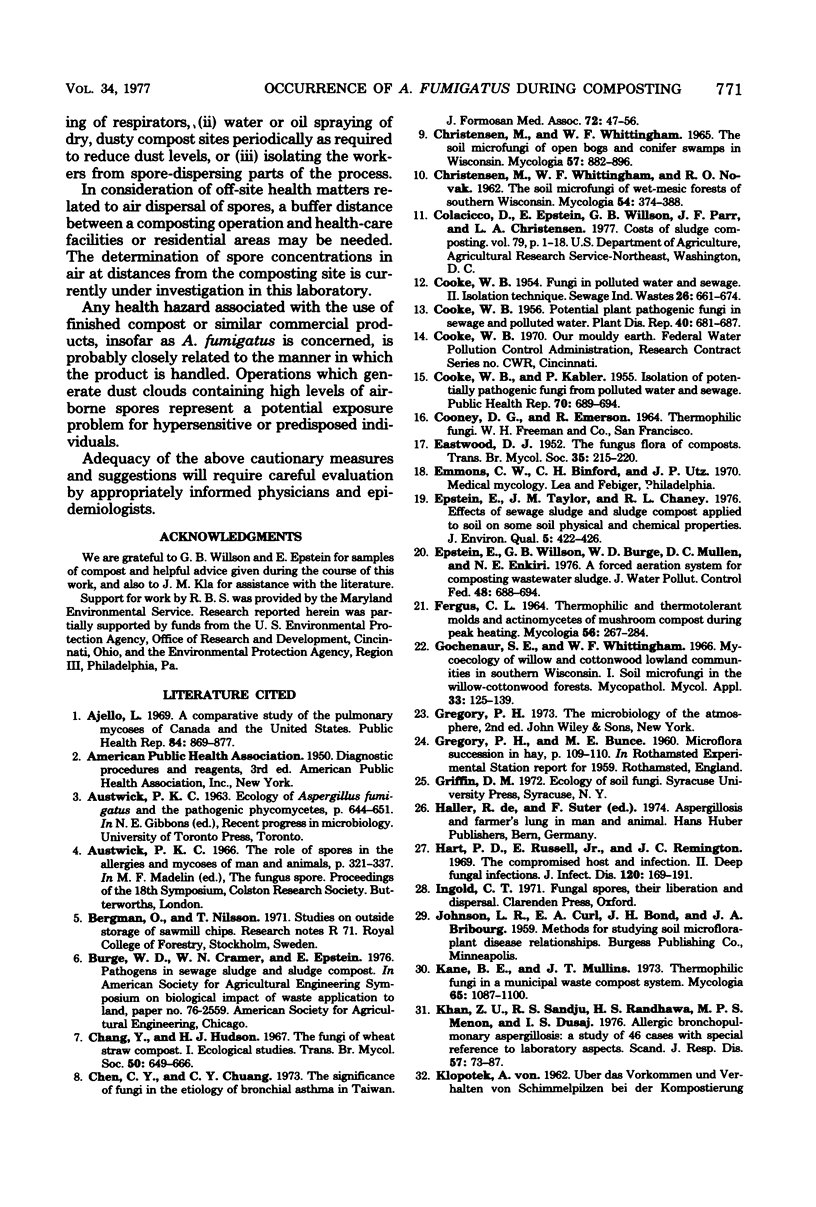
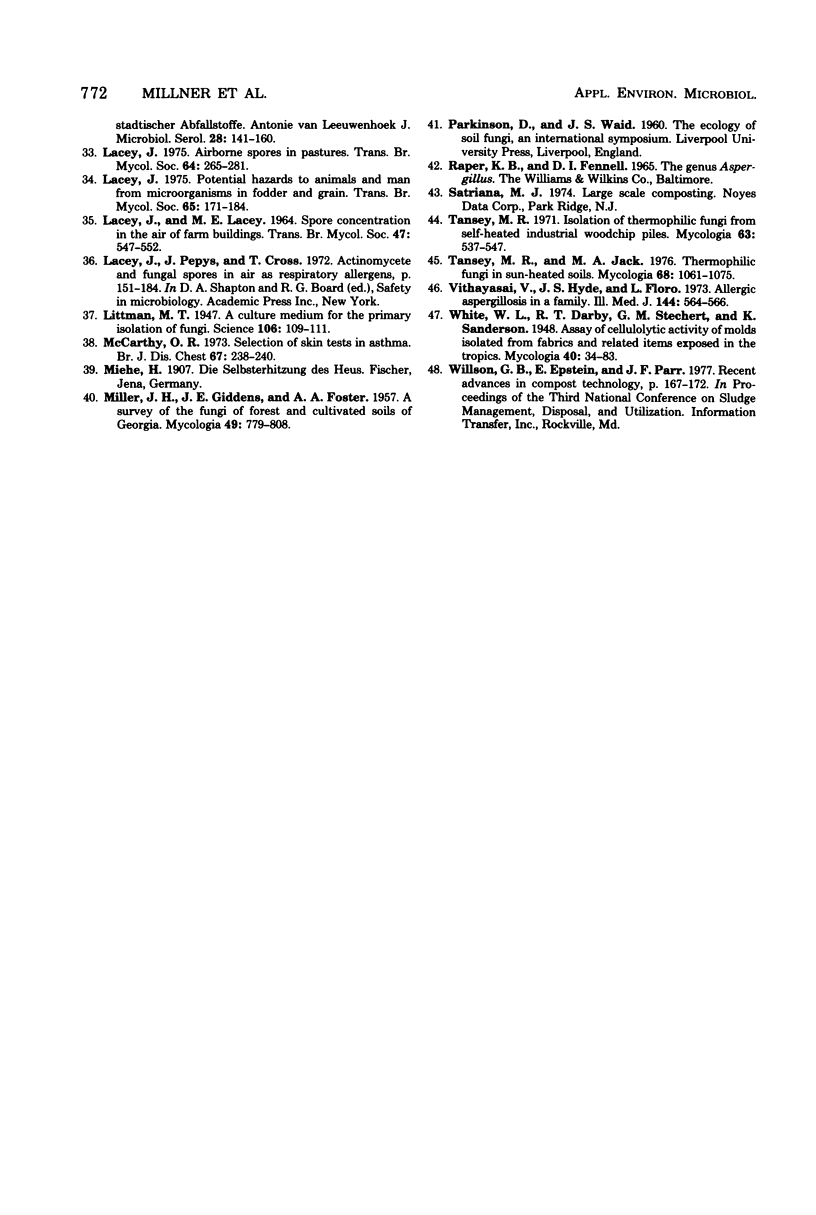
Selected References
These references are in PubMed. This may not be the complete list of references from this article.
- Ajello L. A comparative study of the pulmonary mycoses of Canada and the United States. Public Health Rep. 1969 Oct;84(10):869–877. [PMC free article] [PubMed] [Google Scholar]
- COOKE W. B., KABLER P. Isolation of potentially pathogenic fungi from polluted water and sewage. Public Health Rep. 1955 Jul;70(7):689–694. [PMC free article] [PubMed] [Google Scholar]
- Gochenaur S. E., Whittingham W. F. Mycoecology of willow and cottonwood lowland communities in Southern Wisconsin I. Soil microfungi in the willow-cottonwood forests. Mycopathol Mycol Appl. 1967 Nov 13;33(2):125–139. doi: 10.1007/BF02053443. [DOI] [PubMed] [Google Scholar]
- Hart P. D., Russell E., Jr, Remington J. S. The compromised host and infection. II. Deep fungal infection. J Infect Dis. 1969 Aug;120(2):169–191. doi: 10.1093/infdis/120.2.169. [DOI] [PubMed] [Google Scholar]
- Kane B. E., Mullins J. T. Thermophilic fungi in a municipal waste compost system. Mycologia. 1973 Sep-Oct;65(5):1087–1100. [PubMed] [Google Scholar]
- Khan Z. U., Sandhu R. S., Randhawa H. S., Menon M. P., Dusaj I. S. Allergic bronchopulmonary aspergillosis: a study of 46 cases with special reference to laboratory aspects. Scand J Respir Dis. 1976;57(2):73–87. [PubMed] [Google Scholar]
- Littman M. L. A Culture Medium for the Primary Isolation of Fungi. Science. 1947 Aug 1;106(2744):109–111. doi: 10.1126/science.106.2744.109-a. [DOI] [PubMed] [Google Scholar]
- McCarthy O. R. Selection of skin tests in asthma. Br J Dis Chest. 1973 Jul;67(3):238–240. doi: 10.1016/0007-0971(73)90059-4. [DOI] [PubMed] [Google Scholar]
- Tansey M. R., Jack M. A. Thermophilic fungi in sun-heated soils. Mycologia. 1976 Sep-Oct;68(5):1061–1075. [PubMed] [Google Scholar]
- Vithayasai V., Hyde J. S., Floro L. Allergic aspergillosis in a family. IMJ Ill Med J. 1973 Dec;144(6):564–passim. [PubMed] [Google Scholar]
- von KLOPOTEK [On the occurrence and behavior of mold fungi in composts of urban w astes]. Antonie Van Leeuwenhoek. 1962;28:141–160. doi: 10.1007/BF02538731. [DOI] [PubMed] [Google Scholar]


